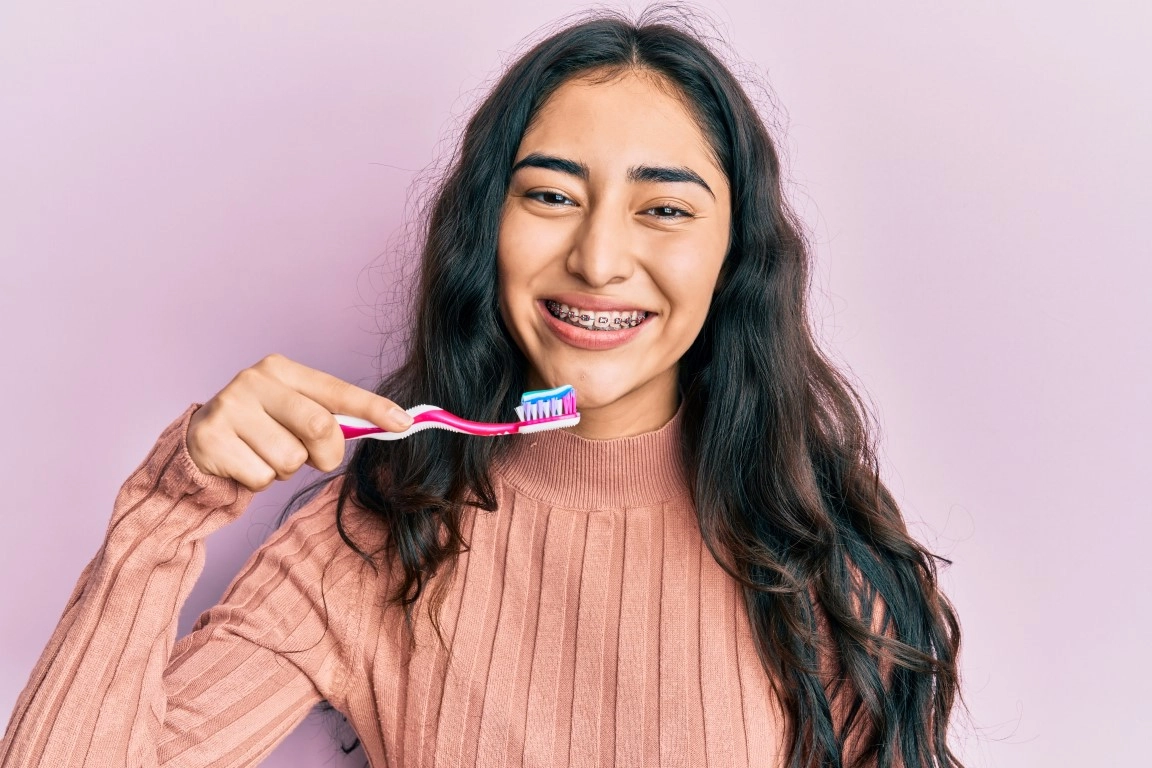
Not all toothpaste is created equal. They all claim to do essentially the same thing — clean your teeth and strengthen your enamel — however, depending on the ingredients they contain, some may be more effective than others. In fact, some contain ingredients that are unnecessary or even potentially harmful.
At Smile Solutions Dentistry, we want our patients to have the tools they need to take good care of their oral health at home. That’s why we’re presenting this guide to common toothpaste ingredients, helping you understand what to look for and what to avoid.
Essential Ingredients to Look For in Toothpaste
First, let’s go over some essential ingredients to look for next time you’re browsing the toothpaste aisle:
Fluoride
Everyone knows that fluoride plays a crucial role in preventing tooth decay and strengthening enamel. It’s backed by the ADA and dental professionals all over the world. Look for toothpaste that contains sodium fluoride or stannous fluoride.
Calcium Phosphate or Nano-Hydroxyapatite
Calcium phosphate and nano-hydroxyapatite have been shown to remineralize enamel and strengthen your teeth. These ingredients are especially helpful for people with sensitivity or early signs of enamel erosion.
Potassium Nitrate
Speaking of sensitivity, potassium nitrate is a desensitizing agent found in toothpaste formulated for sensitive teeth. It helps reduce nerve response to triggers like hot or cold foods, allowing you to eat and drink more comfortably.
Xylitol
Xylitol is a natural sweetener that fights cavity-causing bacteria and helps maintain a neutral pHin the mouth. In addition to being used to sweeten foods and drinks, it can also be found in some toothpaste.
Mild Abrasives
Mild abrasive ingredients like hydrated silica and calcium carbonate are added to toothpaste to gently polish the teeth, remove surface stains, and address plaque buildup. These ingredients are safe when used in moderation.
Antibacterial Agents
Antibacterial agents, such as zinc citrate or essential oils, help reduce gum inflammation and control plaque by killing harmful bacteria in the mouth.

Toothpaste Ingredients to Avoid
While you’re looking for the best active ingredients, keep an eye out for these potentially harmful ingredients:
Sodium Lauryl Sulfate (SLS)
Sodium lauryl sulfate is a common foaming agent found in many household products, including toothpaste. If you have an especially sensitive mouth, avoid SLS, as it has been linked to irritation and can exacerbate canker sores.
Artificial Sweeteners and Flavors
While xylitol can be beneficial, other artificial sweeteners and flavors can be detrimental. Many people find that ingredients like saccharin and aspartame contribute to allergic reactions or sensitivities.
Harsh Abrasives
Mild abrasives are beneficial when used in moderation. However, harsh abrasives like aluminum oxide or overly gritty compounds can actually wear down enamel over time and are best avoided.
Triclosan
Triclosan is sometimes used for its antibacterial properties. However, there’s growing concern about its negative health effects, including antibiotic resistance, gut inflammation, and hormone disruption.
Parabens
Parabens are preservatives with potential endocrine-disrupting effects. If you’re concerned about your overall health, it’s best to avoid toothpaste with these ingredients.
Artificial Colors
Artificial colors are only added to toothpaste to improve its appearance and do not enhance its functionality. In fact, they may cause allergic reactions in some individuals, especially children. If you’re worried about the effect of artificial colors in your toothpaste, look for all-natural alternatives.
Special Considerations
Keep in mind that natural or organic toothpastes, while often free of dyes, SLS, and synthetic sweeteners, may omit fluoride. Check for remineralizing agents to ensure you’re not putting your oral health at risk.
Another thing to consider is that children’s toothpaste comes with a lower fluoride concentration to prevent fluorosis. Look for safe, swallowable formulas designed especially for children.
Finally, if you’re considering using whitening toothpaste, be careful to avoid formulas that contain excessively abrasive particles. Instead, look for options with gentle whitening agents like baking soda or hydrogen peroxide that remove stains without wearing down the enamel.

Protect Your Oral Health with Smile Solutions Dentistry
When you understand the ingredients in your oral care products, you’re empowered to make better decisions about your oral health. Read labels and choose products with beneficial ingredients while avoiding harmful or unnecessary ones.
If you’re not sure whether your toothpaste is helping or hurting your smile, schedule a consultation with Smile Solutions Dentistry today to get professional guidance tailored to your needs.


Follow Us